The Central Board of Secondary Education (CBSE) has designed the Class 10 Mathematics syllabus 2025–26 to strengthen conceptual understanding and analytical skills among students. Among all chapters, Chapter 5: Arithmetic Progressions (A.P.) holds a special significance as it combines both logic and algebraic reasoning. This chapter frequently appears in CBSE Class 10 Board Exams, with direct and application-based questions that test a student’s grasp of patterns, sequences, and progression formulas.
Understanding Arithmetic Progressions helps students not only score well in the exam but also build a strong foundation for higher classes and competitive exams like JEE and NTSE. Most of the questions in this chapter revolve around formulas such as the nth term, sum of n terms, and identifying the pattern of sequences.
To help students prepare effectively, we have compiled a list of the most important and repeated questions for Class 10 Maths Chapter 5: Arithmetic Progressions, carefully curated from previous year question papers and insights from subject matter experts. These questions are categorized as 1-mark, 2-mark, 3-mark, and case study (4-mark) types following the latest CBSE Board Exam pattern 2026. Each question comes with clear and concise answers for better understanding and revision.
CBSE Class 10 Maths Exam 2026: Key Highlights
| Particulars | Details |
| Board | Central Board of Secondary Examination (CBSE) |
| Exam Mode | Offline |
| Subject | Mathematics |
| Paper Name | Maths Standard and Maths Basic |
| Chapter Weightage | 5 Marks (Both Standard and Basic) |
| Medium/ Language | English and Hindi |
| Exam Duration | 3 Hours |
| Total Marks | 100 |
| Theory Paper | 80 Marks |
| Internal Assessment | 20 Marks |
| CHECK: CBSE Class 10 Maths Chapter 1 Real Numbers Important Questions With Answers CBSE Class 10 Maths Chapter 2 Polynomials Important Questions With Answers |
Important Questions and Answers for CBSE Class 10 Maths Chapter 5: Arithmetic Progressions
SECTION A: ONE MARKS
-
In the A.P. 7, 4, 1, –2, … the 10th term is:
A) –20 B) –17 C) –23 D) –26 -
In an A.P., the first term is 12 and the common difference is –3. What is the 5th term?
-
The common difference of an A.P. is 5 and the first term is –2. What is the 8th term?
-
Which of the following sequences is an A.P.?
(i) 3, 6, 12, 24,… (ii) 10, 7, 4, 1,… (iii) 8, 12, 16, 20,… -
If the 21st term of an A.P. minus its 7th term equals 84, find the common difference.
-
The sum of the first term and the 10th term of an A.P. is 26 and the common difference is 2. What is the first term?
-
In an A.P., the nth term is given by an=7+4(n−1). What is its 12th term?
-
True or False: If three consecutive terms are in A.P., their differences are equal.
-
If an A.P. has first term 5 and 15th term 41, what is the common difference?
-
The sum of the first 7 terms of an A.P. is 119 and the sum of the first 17 terms is 714. What is the sum of its first n terms? (Short-answer type)
SECTION B: TWO MARKS
-
The angles of a triangle are in A.P.; the least angle is half the greatest. Find all three angles.
-
Which term of the A.P. 20, 19¼, 18½, 17¾, … is the first negative term?
-
Find the number of terms of the A.P. –12, –9, –6, …, 21. If 1 is added to each term of this A.P., then find the sum of all terms of the A.P. thus obtained.
-
The sum of four consecutive numbers in an A.P. is 32 and the ratio of the product of the first and the last term to the product of the two middle terms is 7 : 15. Find the numbers.
-
If the sum of the first 7 terms of an A.P. is 49, and that of the first 17 terms is 289, find the sum of its first n terms.
-
The ratio of the sum of the first n terms of two A.P.s is (7n + 1) : (4n + 27). Find the ratio of their nth terms.
-
If the pth, qth and rth terms of an A.P. are a, b, c respectively, show that (a−b)r+(b−c)p+(c−a)q=0
-
The first term of an A.P. is 5, the last term is 45 and the sum of all its terms is 400. Find the number of terms and the common difference.
-
In an A.P., the 9th term is equal to 6 times its 2nd term. If its 5th term is 22, find the A.P.
-
If the sum of the first n terms of an A.P. is 3n^2+5n and its kth term is 164, find k.
SECTION C: THREE MARKS
-
Which term of the A.P. 3, 14, 25, 36, … will be 99 more than its 25th term?
-
The 17th term of an A.P. is 5 more than twice its 8th term. If the 11th term of the A.P. is 43, find its nth term.
-
If the sum of the first n terms of an A.P. is given by Sn=2n^2+n, find its nth term.
-
In an A.P., the 4th term is zero. Prove that its 25th term is triple its 11th term.
-
How many terms of the A.P. 45, 39, 33,… must be taken such that their sum is 180? Explain if there is more than one answer.
-
Find how many integers between 200 and 500 are divisible by 8.
-
In an A.P., the first term is a and the common difference is d. Prove that the sum of the first n terms is Sn=n/2[2a+(n−1)d]. Then find the sum of the first 50 terms when a = 7 and d = 3.
-
The ratio of the 11th term to its 18th term of an A.P. is 2 : 3. Find the ratio of the sum of its first 5 terms to the sum of its first 10 terms.
-
If the nth term of an A.P. is given by an=3+2n, find the sum of the first 24 terms.
-
In an A.P. of 50 terms, the sum of the first 10 terms is 210 and the sum of its last 15 terms is 2565. Find the A.P.
SECTION D: FOUR MARKS
Case Study 1
Alice helps her grandmother distribute sweets. She gives 10 sweets to the first child, 8 sweets to the second, 6 sweets to the third, and so on, decreasing by 2 sweets each time until she gives to the last child.
(a) Write the A.P. of sweets given out.
(b) How many children receive sweets if the last child gets 0 sweets?
(c) What is the total number of sweets distributed?
(d) If instead she decided to stop when a child receives 2 sweets, how many sweets would she distribute and to how many children?
Case Study 2
A gardener plants a row of flowering plants. On day-1 he plants 5 plants, day-2 he plants 8 plants, day-3 he plants 11 plants, and continues planting more each day so that the number increases by the same amount each day.
(a) Identify the first term, common difference and general term of the A.P. of plants planted each day.
(b) On which day will he plant the 50th plant in one day?
(c) How many plants will he have planted in total by that day?
(d) If he wants the total number planted by day n to be exactly 1000, find n.
Case Study 3
A library has a scheme: the fee for membership in the first year is Rs 300, in the second year it is Rs 350, in the third year Rs 400, increasing by Rs 50 each year.
(a) Express the membership fees year-wise as an A.P. (first term, d).
(b) What will be the fee in the 10th year?
(c) What is the total fee paid by a member over the first 10 years?
(d) If a member has paid a total of Rs 6750 in consecutive years under this scheme, how many years did he subscribe?
Case Study 4
A gym gives a “loyalty bonus” to members: in the first month the bonus is Rs 100, second month Rs 120, third month Rs 140, and so on (increasing by Rs 20 each month) for the first n months.
(a) Write the A.P. for the monthly bonus.
(b) If after n months the total bonus given is Rs 3000, find n.
(c) What is the bonus in the 12th month?
(d) If they decide to cap the monthly bonus at Rs 400 (i.e., if the natural A.P. gives more than Rs 400 it stays at Rs 400 from then on), how many months until the cap applies, and what is the total bonus paid until the cap applies?
Case Study 5
In a parking-lot, the number of cars entering each hour forms an A.P.: in the first hour 20 cars enter, in the second hour 24 cars enter, in the third hour 28 cars enter, and so on.
(a) Determine the A.P. (first term, common difference).
(b) How many cars enter in the 15th hour?
(c) What is the total number of cars entered in the first 15 hours?
(d) If the parking-lot capacity is 2000 cars for a day (24 hours) and the pattern continues, by what hour will the capacity be reached or exceeded?
| CHECK: |
Answers:
SECTION A
| Question No | Answer |
| 1. | A) −20 |
| 2. | 0 |
| 3. | 33 |
| 4. | (ii) and (iii) |
| 5. | d=6 |
| 6. | First term a=4 |
| 7. | 51 |
| 8. | True |
| 9. | d=18/7 |
| 10. | Sn=n(5n−1)/2 |
SECTION B
| Question No. | Answer |
| 1. | The angles of a triangle are in A.P.; the least angle is half the greatest. Find all three angles. Let the three angles be a−d, a, a+d Given: a−d=1/2(a+d)⇒2a−2d=a+d⇒a−3d=0⇒a=3d. Sum of angles: (a−d)+a+(a+d)=3a=180∘⇒a=60∘ So d=20∘ Angles: a−d=40∘, a=60∘, a+d=80∘. |
| 2. | Common difference d=19.25−20=−3/4 General term: an=20+(n−1)(−3/4) Solve 20−(n−1)34<0⇒(n−1)>80/3=26.66 The smallest integer nnn is 28. Answer: 28th term. |
| 3. | Here a=−12, d=3 Last term condition: −12+(n−1)3=21⇒3(n−1)=33⇒n=12 Sum of original: S=n/2(a+ℓ)=12/2(−12+21)=6×9=54 After adding 1 to each term, the new sum =54+12×1=66. Answer: number of terms =12; sum after adding 1 =66. |
| 4. | |
| 5. | |
| 6. | Let S1(n)=k(7n+1) and S2(n)=k(4n+27) (same proportionality k for all n). Then, t1n=S1(n)−S1(n−1)=k[(7n+1)−(7(n−1)+1)]=7k Similarly, t2n=S2(n)−S2(n−1)=k[(4n+27)−(4(n−1)+27)]=4k. So ratio t1n:t2n=7:4 |
| 7. | Let first term A and difference D. Then a=A+(p−1)D, b=A+(q−1)D, c=A+(r−1)D. Compute differences: a−b=(p−q)D, b−c=(q−r)D, c−a=(r−p)D. Now (a−b)r+(b−c)p+(c−a)q=D[r(p−q)+p(q−r)+q(r−p)] Expand bracket: rp−rq+pq−pr+qr−qp=0 Hence expression =0. |
| 8. | Let number of terms =n Sum: S=n/2(5+45)=25n=400⇒n=16. Last term: a+(n−1)d=45⇒5+15d=45⇒15d=40⇒d=40/15=8/3. Answer: n=16, d=8/3 |
| 9. | |
| 10. | |
SECTION C
| Question No | Answer |
| 1. | Common difference d=14−3=11. 25th term t25=3+(25−1)⋅11=3+264=267 We want tk=t25+99=267+99=366. Solve 3+(k−1)⋅11=366⇒(k−1)⋅11=363⇒k−1=33⇒k=34. Answer: 34th term. |
| 2. | Let the first term aaa and the common difference ddd. Condition: a+16d=2(a+7d)+5a+16d = 2(a+7d)+5a+16d=2(a+7d)+5. Given a+10d=43a+10d=43a+10d=43. Substitute a: 2d−5+10d=43⇒12d=48⇒d=4 Then a=2(4)−5=3. So an=a+(n−1)d=3+(n−1)⋅4=4n−1 Answer: an=4n−1 |
| 3. | |
| 4. | Let a be the first term and ddd common difference. 4th term: a+3d=0⇒a=−3d. 11th term: t11=a+10d=−3d+10d=7d.. 25th term: t25=a+24d=−3d+24d=21d. Clearly t25=21d=3⋅7d=3t11 Hence proved. |
| 5. | |
| 6. | The smallest integer ≥200 is divisible by 8 is 200 (since 200/8=25 integers). The largest ≤ 500 is divisible by 8 is 496 (since 8×62=496). Count =62−25+1=38. Answer: 38 integers. |
| 7. | |
| 8. | |
| 9. | |
| 10. | |
SECTION D
| Question No. | Answer |
| 1. | Given: Alice distributes sweets as 10, 8, 6, … (decreasing by 2 each time) (a) A.P. = 10, 8, 6, 4, 2, 0 (b) Last term (aₙ) = 0, a = 10, d = −2 0 = 10 + (n − 1)(−2) ⇒ 0 = 12 − 2n ⇒ n = 6 ∴ Number of children = 6 (c) Total sweets (Sₙ) = n/2 [2a + (n − 1)d] S₆ = 6/2 [2(10) + 5(−2)] = 3(20 − 10) = 30 ∴ Total sweets distributed = 30 (d) If last term = 2, then 2 = 10 + (n − 1)(−2) ⇒ 2 = 12 − 2n ⇒ n = 5 S₅ = 5/2 [2(10) + 4(−2)] = 5/2 [20 − 8] = 5/2 × 12 = 30 ∴ Number of children = 5, Total sweets = 30 |
| 2. | (a) Identify the first term, common difference and general term of the A.P. of plants planted each day.
a_n = 5 + (n-1)3 a_n = 5 + 3n - 3 a_n = 3n + 2 (b) On which day will he plant the 50th plant in one day? We need to find the day n such that an=50. 3n + 2 50 3n = 48 n = 16 He will plant the 50th plant (meaning, a total of 50 plants that day) on Day 16.
|
| 3. | (a) Express the membership fees year-wise as an A.P. (first term, d).
A.P.: a = 300, d = 50 (b) What will be the fee in the 10th year? We use the formula for the n-th term of an A.P., an=a+(n−1)d, with n=10: a_10 = 300 + (10 - 1)50 a_10 = 300 + 9(50) a_10 = 300 + 450 a_10 = 750 The fee in the 10th year will be Rs 750.
|
| 4. |
|
| 5. | (a) Determine the A.P. (first term, common difference).
|
To Check all the detailed answers of the important question of CBSE Class 10 Maths Chapter 5: Arithmetic Progressions, Download PDF from the link provided below:
CBSE Class 10 Maths Chapter 5 Arithmetic Progressions: Download PDF of Important Questions and Answers |
CBSE Class 10 Maths Board Exams requires focused practice on high-yield questions from all chapters. To streamline your revision and ensure you cover only the most important questions guaranteed to boost your confidence, you can instantly access the complete, chapter-wise compilation specifically designed for dedicated board students simply click the below link to get the important questions of CBSE Class 10 maths of all chapters from here for board students.
CHECK: CBSE Class 10 Maths Important Questions with Answers 2026: All Subjects |
CBSE Class 10 Maths: Deleted Syllabus 2026
There are No Deletions for Chapter 5: Arithmetic Progressions.This means you must prepare the entire chapter, including the formula, the formula for the sum of the first n terms, and all related word problems.
These deletions aim to focus on core concepts and facilitate a more manageable study plan. For a comprehensive list of all deleted topics across subjects, please refer to the full article below:
| CHECK: CBSE Class 10 Deleted Syllabus 2025–26: Subject-wise List of Removed Topics |
Practicing these CBSE Class 10 Maths Chapter 5 (Arithmetic Progressions) important questions helps students grasp the concept of common difference, nth term, and sum of n terms effectively. Regular practice from these questions ensures confidence and high accuracy in the CBSE Board Exam 2026.
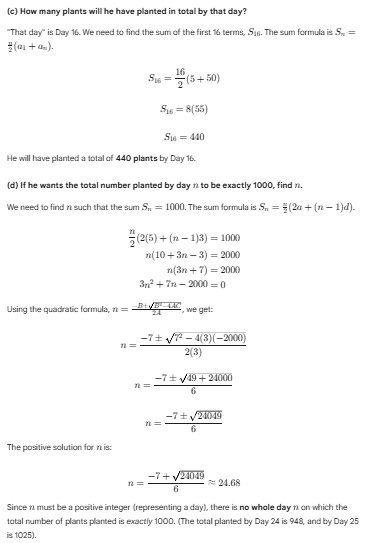
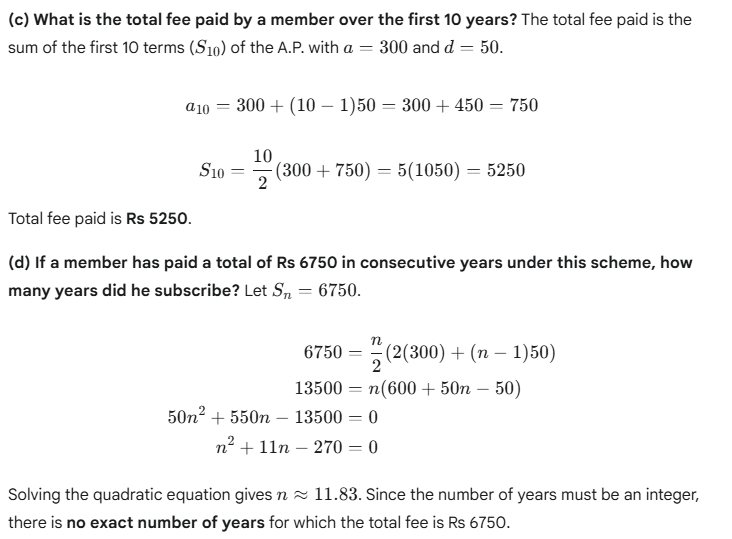
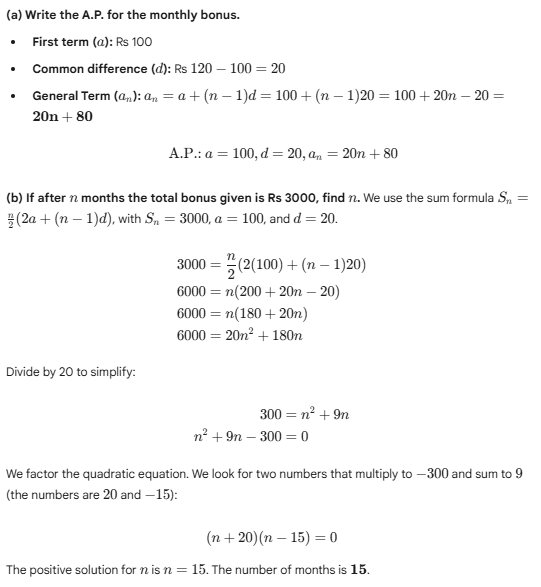
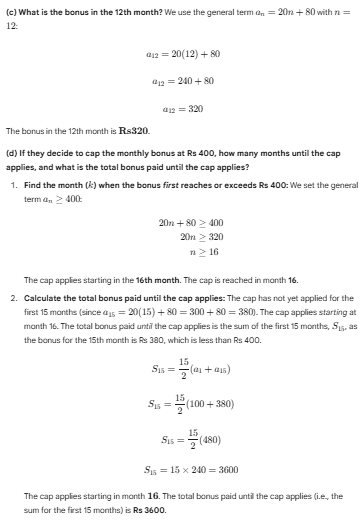
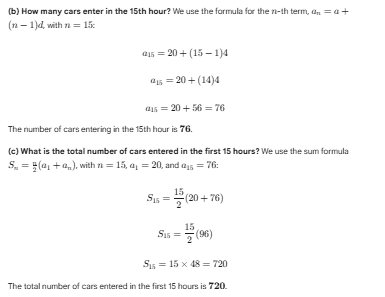
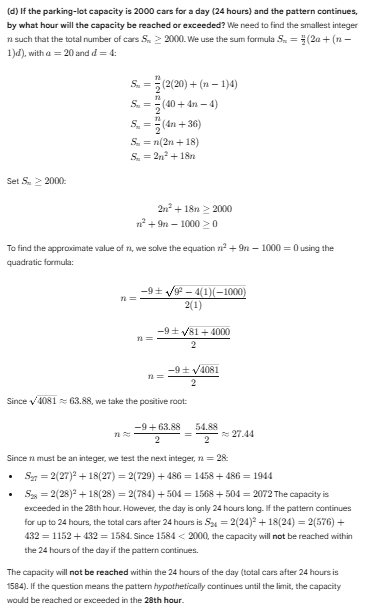
Comments
All Comments (0)
Join the conversation